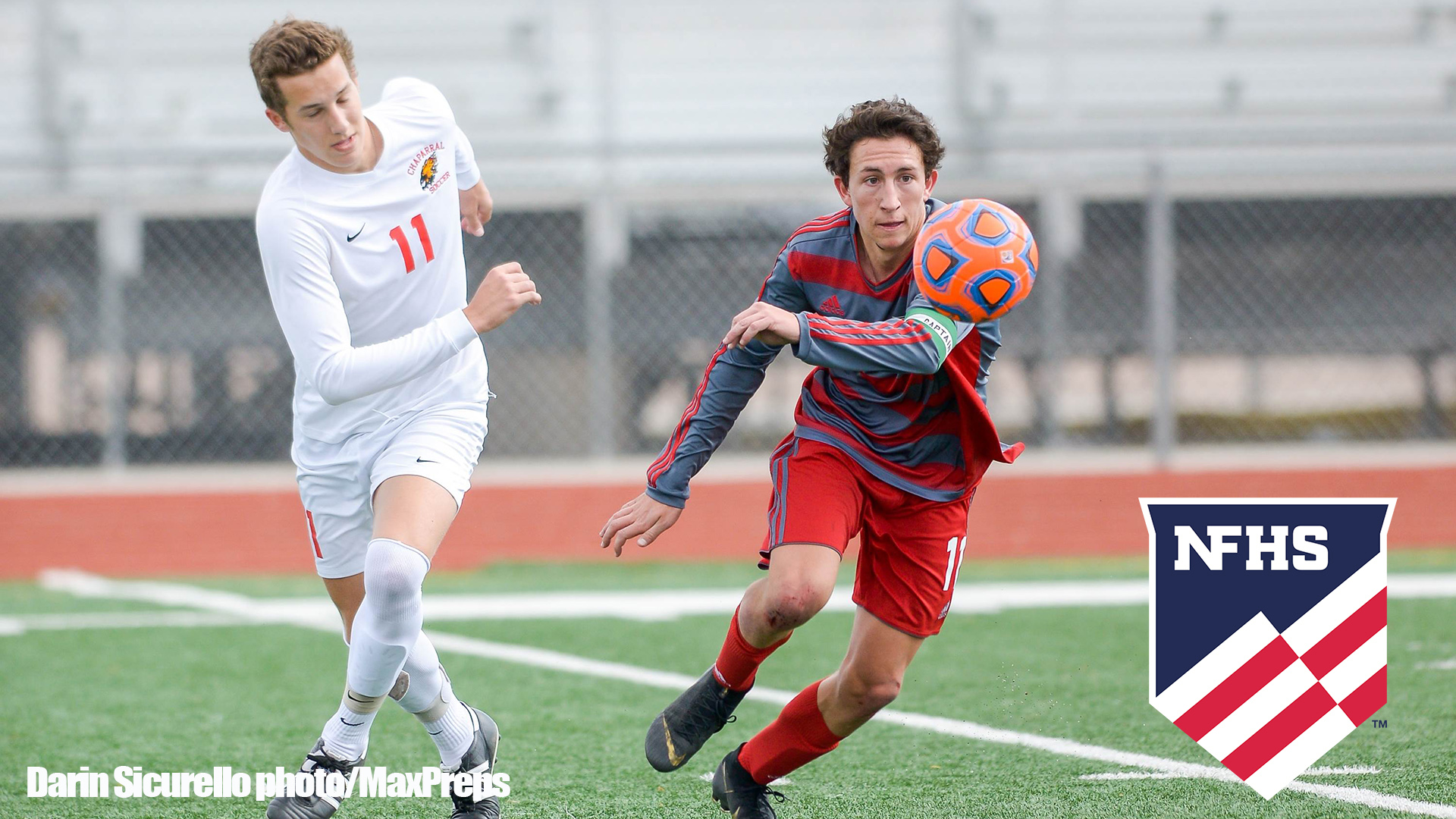Revisions made in fouls and misconduct rule for soccer
March 4, 2024 by Seth Polansky, AZPreps365

Rule 12 of the NFHS Soccer Rules Book on Fouls and Misconduct has been revised and reorganized and includes a new section on “Stopping a Promising Attack.”
The revisions in the Fouls and Misconduct Rule, along with one change in Rule 4 regarding Player Equipment, were recommended by the National Federation of State High School Associations (NFHS) Soccer Rules Committee at its February 5-7 meeting in Indianapolis. All changes were subsequently approved by the NFHS Board of Directors.
Rule 12-7 defines what a promising attack is, how to determine a promising attack, and any punishments a player may receive. The new language states that a promising attack is an attack moving quickly with the promise or potential to become a clear goal-scoring opportunity for the attacking team. A promising attack can occur anywhere on the field.
When determining if an attack is promising, the following considerations would include but are not limited to: distance between the offense and the goal, general direction of play, likelihood of keeping or gaining control of the ball, if the attacking team is moving forward with speed, open space in front of the player with the ball or the presence of other attackers who could receive the ball, the player having an option to take on the defender or pass to a teammate, and if the attacker has assistance from teammates.
In a move to achieve one of the committee’s fundamental tasks of creating an atmosphere of sportsmanship, much of Rule 12 was rearranged and re-worded for clarity and consistency.
“The biggest change we’ve come across this year is the reorganization of Rule 12 to address some issues of sportsmanship, to clarify some tools for officials, and to focus on positive interactions with coaches, officials and student-athletes,” said Gibby Reynolds, chair of the NFHS Soccer Rules Committee and a member of the Oregon School Activities Association administrative staff.
Other revisions in the Fouls and Misconduct Rule include a section on Ejections (previously named Disqualifications), which provides an ordered list of offenses by severity to allow associations more flexibility for determining post-game sanctions for misconduct.
Multiple changes were made to Section 8 of Rule 12 – Denying an Obvious Goal Scoring Opportunity (DOGSO). A new article was added to clarify that all necessary conditions must be met for DOGSO to be applicable. Rule 12-8-4 now states: “If any element in article one is missing, the player cannot be ejected for DOGSO. However, this may indicate an attack is promising and additional factors should be considered.”
Finally, Rule 4-1-4d was modified to state that if tape or similar material is applied to socks above the ankle, it shall be of similar color to the area of the sock to which it was applied. Referees are no longer required to oversee socks below the ankle.
A complete listing of the soccer rules changes will be available on the NFHS website at www.nfhs.org. Click on “Activities & Sports” at the top of the home page and select “Soccer.”
According to the 2022-23 NFHS High School Athletics Participation Survey, soccer is the fifth most popular high school sport for boys with 450,455 participants in 12,484 schools nationwide. Soccer is the third most popular sport for girls with 377,838 participants in 12,100 schools.
This press release was written by Cameron Baker, an intern in the NFHS Publications and Communications Department and a senior sports management major at Franklin (Indiana) College.
###
About the National Federation of State High School Associations (NFHS)
The NFHS, based in Indianapolis, Indiana, is the national leadership organization for high school sports and performing arts activities. Since 1920, the NFHS has led the development of education-based interscholastic sports and performing arts activities that help students succeed in their lives. The NFHS sets direction for the future by building awareness and support, improving the participation experience, establishing consistent standards and rules for competition, and helping those who oversee high school sports and activities. The NFHS writes playing rules for 17 sports for boys and girls at the high school level. Through its 50 member state associations and the District of Columbia, the NFHS reaches more than 19,500 high schools and 12 million participants in high school activity programs, including more than 7.6 million in high school sports. As the recognized national authority on interscholastic activity programs, the NFHS conducts national meetings; sanctions interstate events; offers online publications and services for high school coaches and officials; sponsors professional organizations for high school coaches, officials, speech and debate coaches, and music adjudicators; serves as the national source for interscholastic coach training; and serves as a national information resource of interscholastic athletics and activities. For more information, visit the NFHS website at www.nfhs.org.
MEDIA CONTACTS:
Bruce Howard, 317-972-6900
Director of Publications and Communications
National Federation of State High School Associations
bhoward@nfhs.org
Chris Boone, 317-972-6900
Assistant Director of Publications and Communications
National Federation of State High School Associations
cboone@nfhs.org
Nate Perry, 317-972-6900
Manager of Media Relations
National Federation of State High School Associations
nperry@nfhs.org


